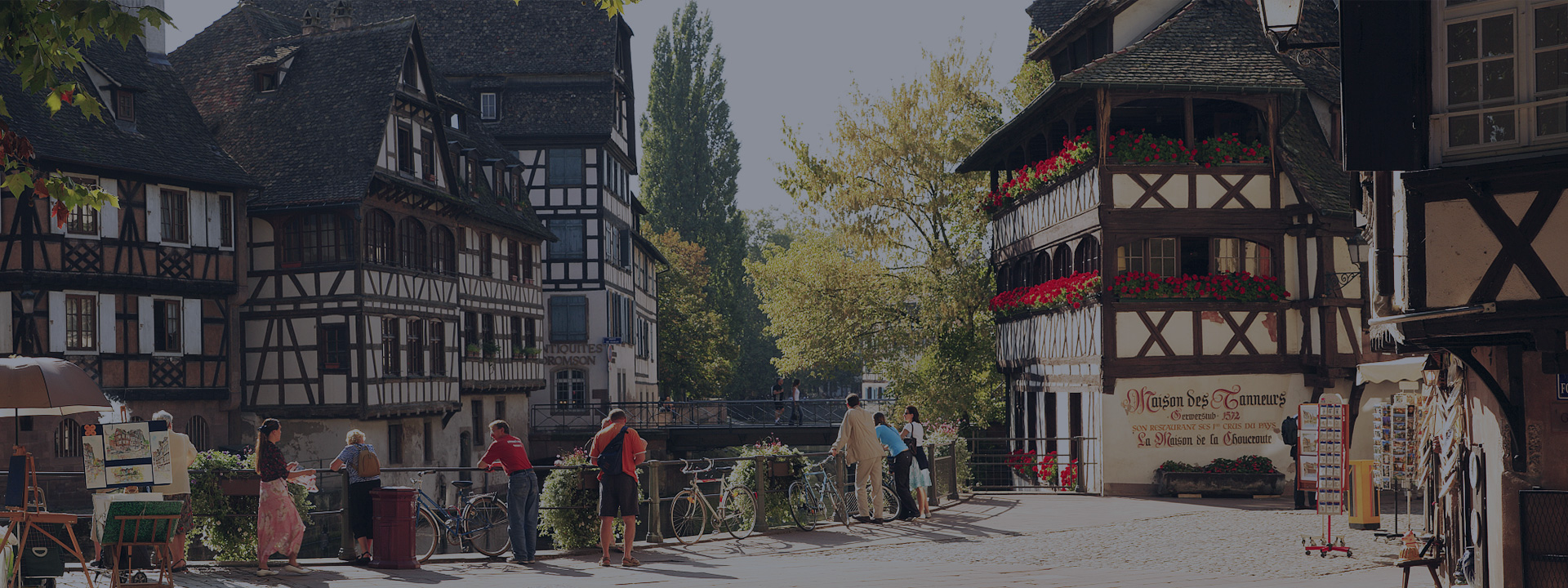
Almada歌剧节室外小剧场,葡萄牙 / ATELIER JQTS
位置:
葡萄牙
类型:
建筑
标签:
ATELIER JQTS exhibition Pavilion wood 展览建筑 木材
分类:
博物馆 文化建筑
Povera Pavilion 是为Almada歌剧节庆祝蓝色剧院(Teatro Municipal Joaquim Benite, 由Manuel Graça Dias与Egas José Vieira设计)10周年而搭建的。这座椭圆形的建筑,使用的材料是粗加工的松木条,设计师通过展示原始的质感为设计增色。通常在剧院中支撑舞台布景的三角形构件,经过设计,作为一种全新的元素构成了整座建筑。一根柱体和一条连接起建筑两端的横梁形成了建筑的入口,并赋予整个结构以稳定感。因为这座临时建筑面对着剧院的两个出口,小剧场入口的构成元素通过自身的颜色、位置和质感,非常醒目地将其呈现了出来。
Usually a scenography in theater appears as a consequence of a certain text and a certain sequence of actions. Could we conceive it in the opposite direction? Would it be possible to use space as a way of anticipate and contribute the whole action as an outline condition? The scenography, or as we would argue, the Architecture itself, might influence the play and favor for certain actions instead of some others in an informal and none imposed way. Space, text and action could come together in a non hierarchical order and in a close relation and intimacy. Rossi says that “theater has to do with the happening: his beginning, development and conclusion. Without happening there’s no Theater and there’s no Architecture”.
POVERA Pavilion was conceived for the Almada Theater Festival in order to celebrate the 10th anniversary of the Blue Theater (Teatro Municipal Joaquim Benite, by Manuel Graça Dias and Egas José Vieira). It is an elliptical structure made out of pine wood with a rough finishing which exposes and accepts his artisanal condition as an added value. It was developed and build together with a group of seven students. The small triangular element that is usually used in theater as a physical support for the bidimensional scenogaphies (and hidden behind the stage) was redraw as a new element that generates the whole project. The invisible element is taken from his original context and used with very different proportions as to assume itself as the central element. A column and a beam in both extremes give stability to the overall structure and define the entrance. Those crucial constructive elements appear almost with a figurative character due their flat finishing, color and position since they are facing the two existing theaters there.
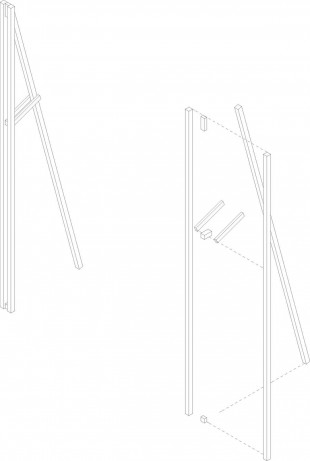
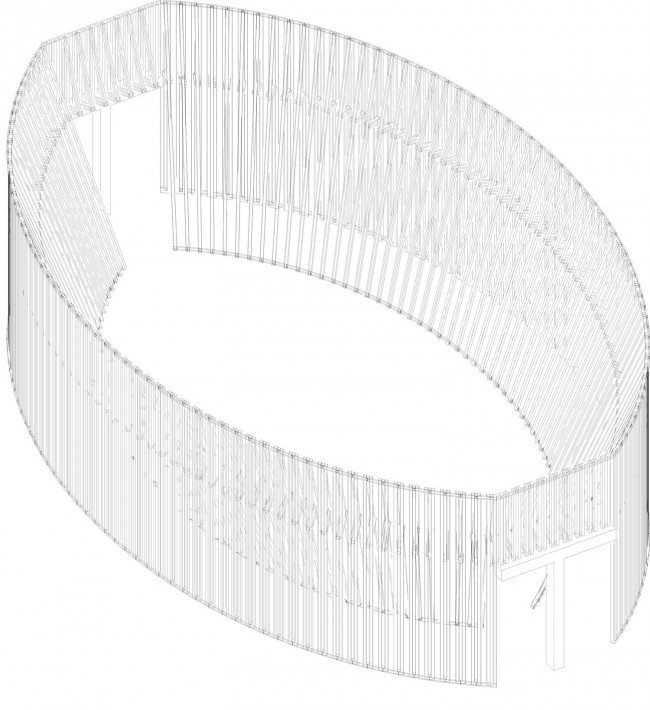
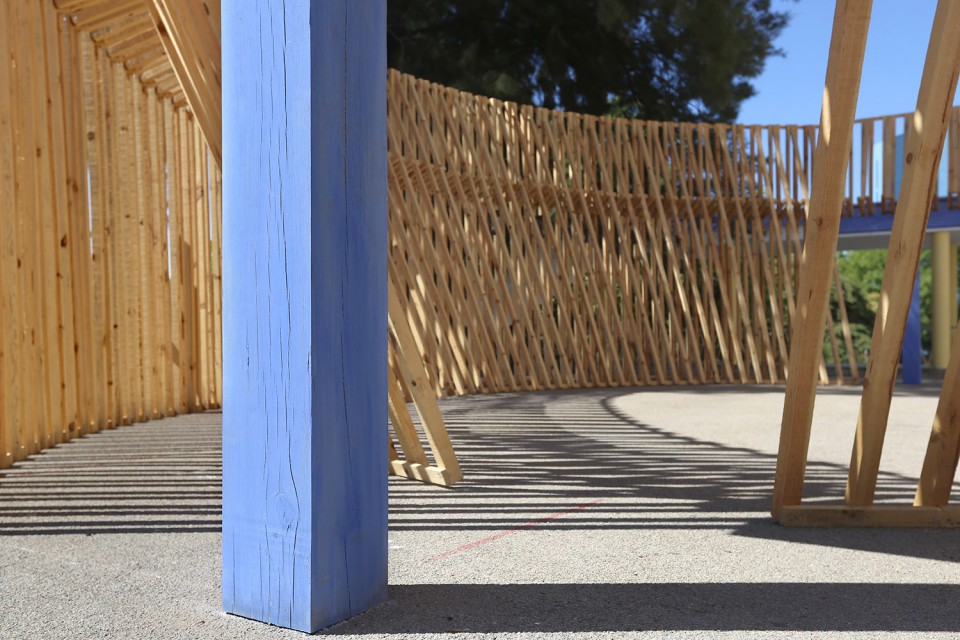
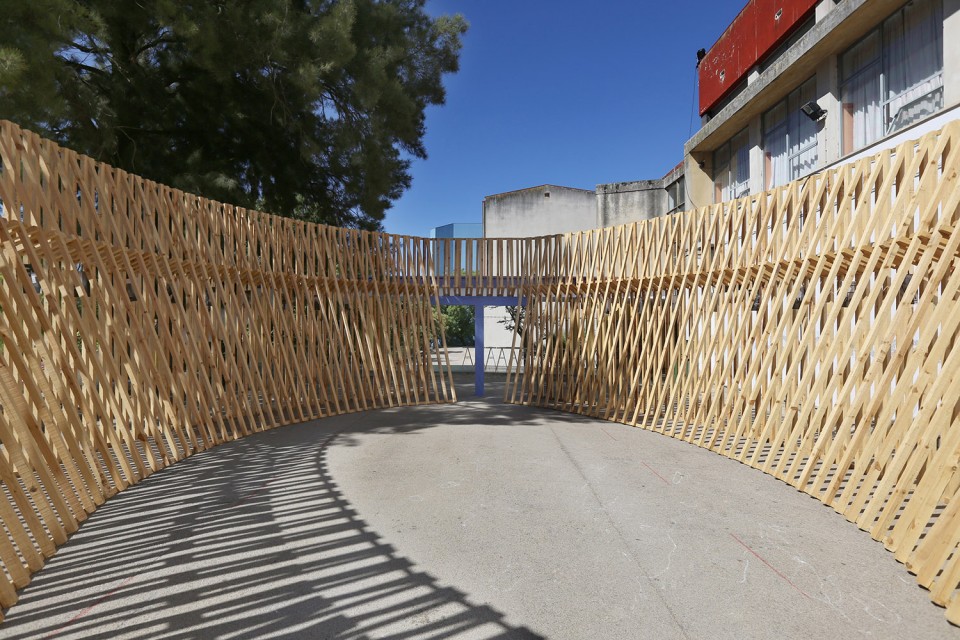
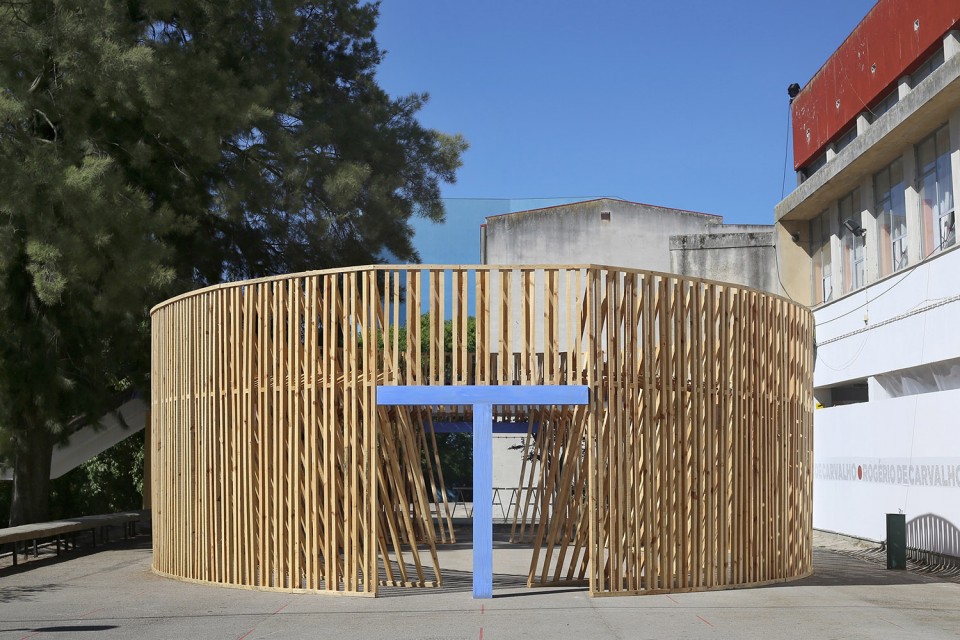
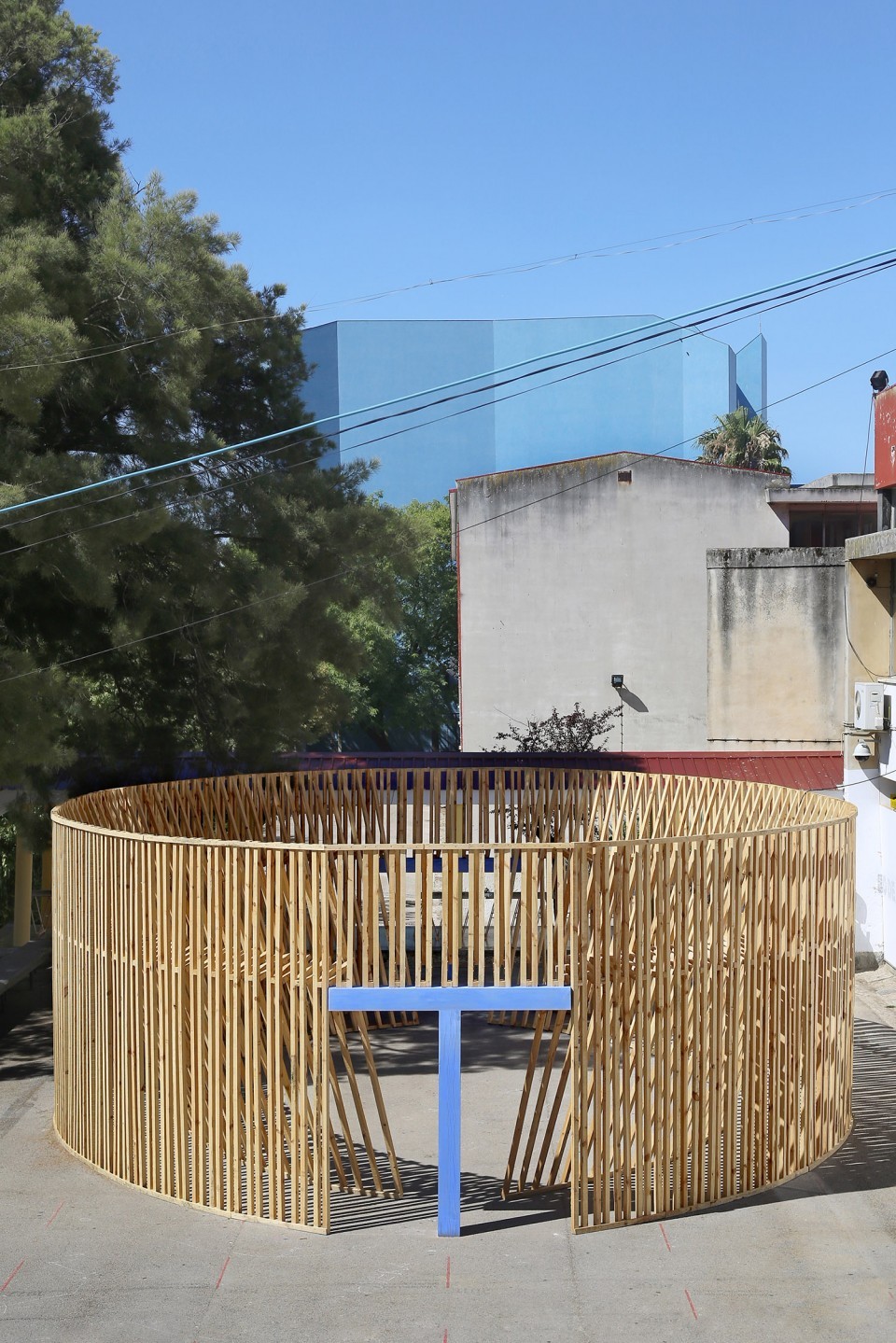
Povera再现了在一些中世纪剧场中出现的中央空间的类型特征。同时它也借鉴了罗马剧场的一些特点,后者被认为是古典剧场的集大成者,椭圆形的舞台正是从它们而来。这座剧院前的小建筑试图拯救这些传统的空间样式,同时探索整个事件与文脉之间的关系。总之,这座建筑要展现一种民主:舞台和观众区在一个整体的空间内。观众身处的场景同演员一样,以一种活跃的方式参与到表演之中。表演的主要空间是一个“空空间”,表演者将在那里建造自身的空间。这一空间虽然被定义,却不是封闭的,每个人都可以从外部看得到。它暗示了某种空间的假设,也或许会影响到不同的表演形式。
POVERA recuperates the central spatial typology from some medieval theater representations. And it also reports to the idea of the roman amphitheaters since they were conceived as a formal combination from the classical theaters and they introduced the elliptical stage as well as a subtle different function. The proposed pavilion for the theater festival tries to rescue some spatial patterns of those spaces and to explore the relation with the whole event and context. Nevertheless it is propositive facing it democratization: The stage and the audience area are in one and the same space. The audience lives the condition of the actor and contributes in a very active manner. The actor lives the condition of the audience as he observes and analyses the whole action. The main space for the action is “the empty space”, the apparently unbuilt space. The action builts itself in there. The space is defined but not closed so everyone can see it from the outside as well. It indicates some spatial assumptions and might influence different actions without imposing any.
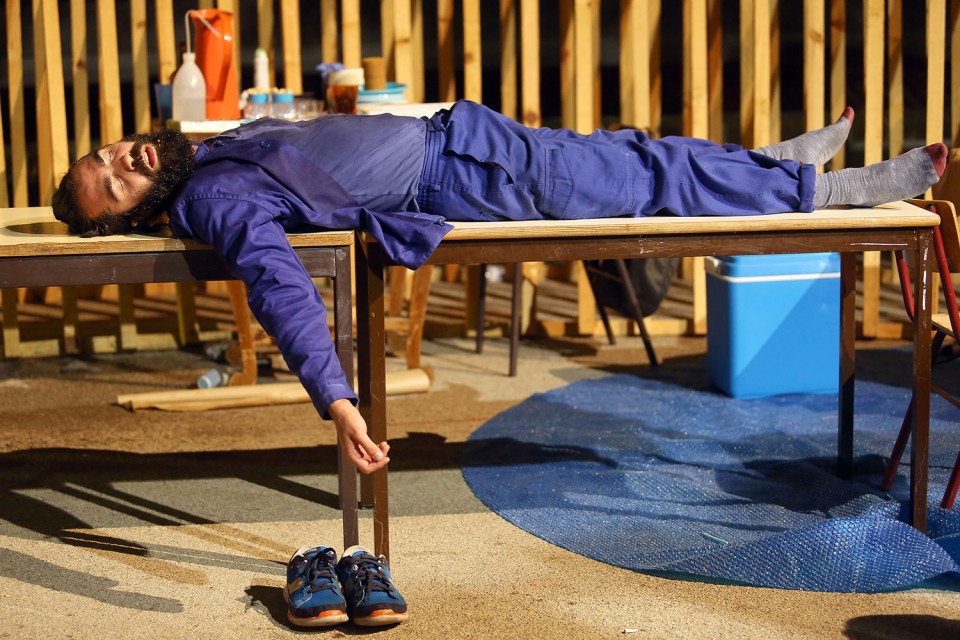
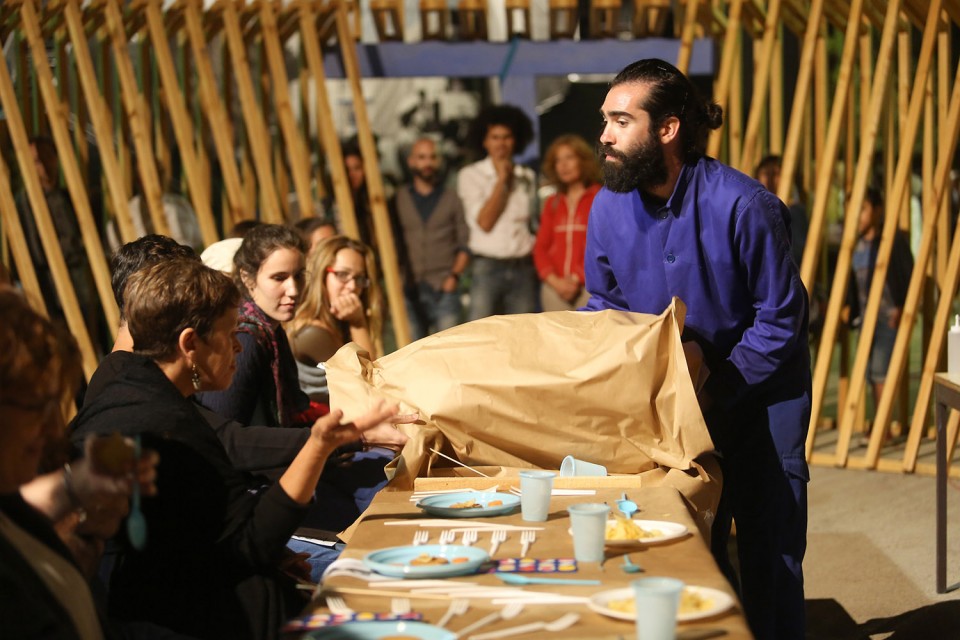
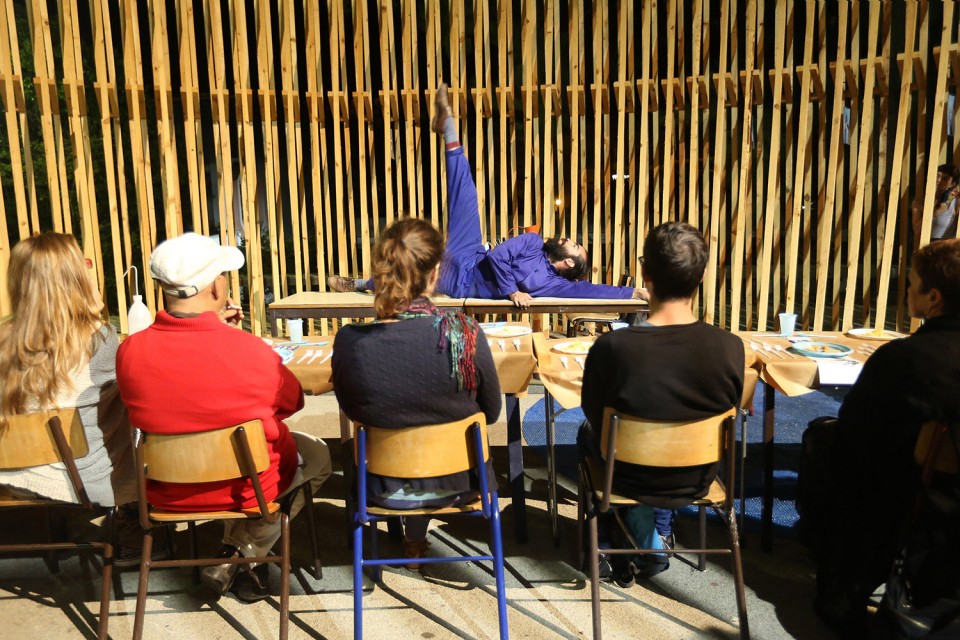
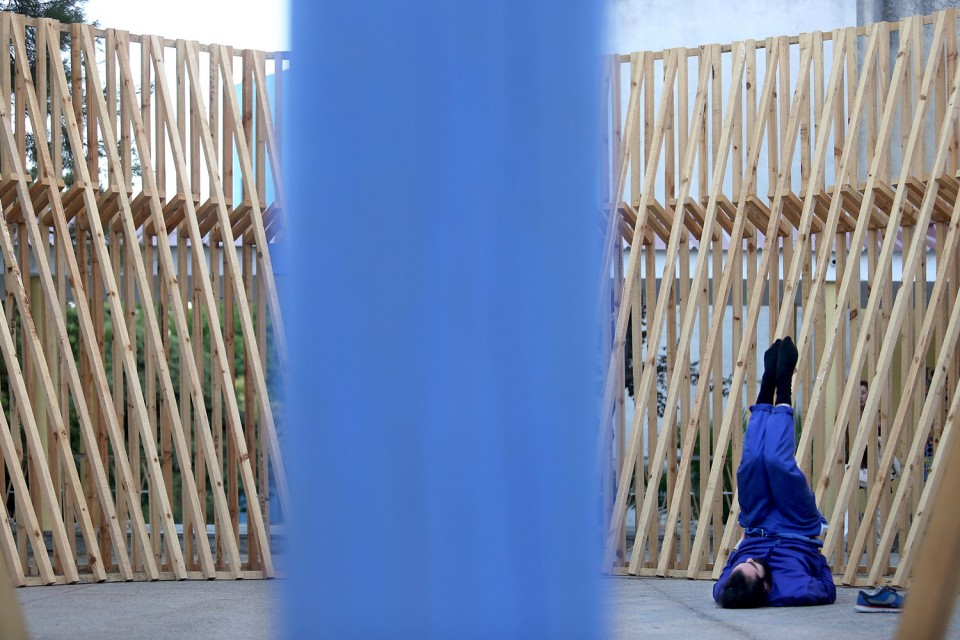
Goncalo M. Tavares在著作Atlas do corpo e da imaginação中描述了两种不同的场所营造的方式:受体(receptors)运动,即以一种积极地方式调整自身来接受某种动作;逸体(emitter)运动,即通过提议和改变周围的环境来做出相反的动作。Povera的位置恰在音乐节入口和主舞台中间。人们被邀请走进这一空间中来,同时正有演出在此上演——在人们到来之前,离去之后,永不停止,却没有一个演员。观众从中穿梭,成为演出的一部分。就观众来说,他们在舞台上既做受体运动又做着逸体运动,人生的舞台亦然。这就是所谓的“剧院是建筑终止之处,却是想象和胡闹开始的地方”罢。
In his book “Atlas do corpo e da imaginação” (Atlas of the body and the imagination) Gonçalo M. Tavares talks about the construction of situations in two types: the receptors movements of existence, the ones that adapt themselves by receiving the actions in a passive way, and the emitting movements of existence, the ones that work in the opposite way by proposing and changing the circumstantial conditions. POVERA is located just in the middle point between the entrance of the Festival area and the entrance to the main stage and the people is invited to walk through the space where a performance is taking place. It starts before the first person has arrived and finishes after the last one has left, with no one. The audience is invited to see and to make part of the play simple by passing thought and change the action. So the audience is simultaneously receptor and emitter of movements inside the stage that at the end is the life itself, it’s the routine, the ritual and the everyday life. Is it really true that “theater is the place where the Architecture ends and the world of the imagination and the foolishness begins”?

 400-088-3861
400-088-3861 15801391978
15801391978